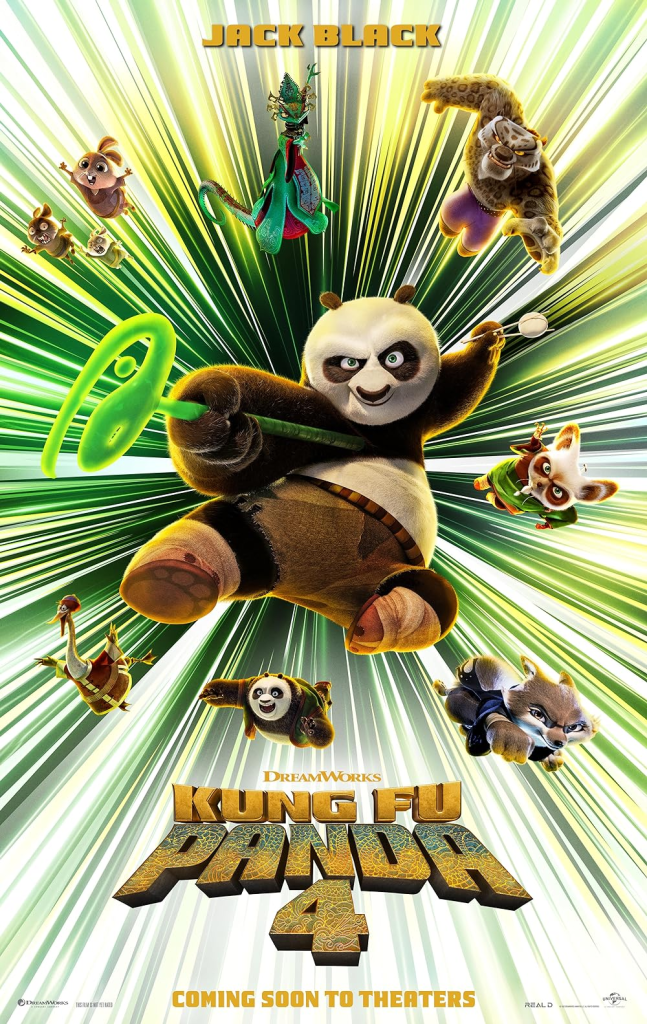
This is a franchise that’s stood the test of time in the world of modern animation, and Jack Black has always been the core of why Po has resonated with audiences for so long — and perhaps the main reason this film manages to entertain at all. Though Kung Fu Panda 4 still has a vibrant and silly energy, it no longer manages to up the ante as each of the past installments did. Though Jack Black is always a huge delight as Po, and possibly one of the best animated franchise leads we’ve ever been graced with, the film often struggles to justify its existence because Po’s journey and growth doesn’t feel as natural and potent as it did in the other films. His struggles to embrace change and pass down the mantle of Dragon Warrior don’t feel fleshed out or as vital to his path. Awkwafina also gives one of her more memorable voice performances and is a great pairing with Black. It’s fun to see Viola Davis as menacing and cunning as she is here, but we don’t spend enough time with the Chameleon to buy her motives and for her to resonate with us. Her characteristics ultimately feel derivative of Lord Shen and Kai from the other movies.
The film embraces the faster pace and editing that worked in the third movie, but the editing decisions sometimes feel even too cartoonish and take you out of the moment. The animation is still lively, but looks a little simplistic compared to the beautifully detailed skies and characters in the last two films. There’s also a side plot that didn’t need as much time as it got, and some inconsistencies with the rules of this world of kung fu that may clash with the rules from the other films. The explanation for the Furious Five’s absence also feels tacked on and too evidently a behind-the-scenes thing. The action and looks are always fun, as is Jack Black being so committed to bringing us all joy and laughs. Is it a fun time in the Valley of Peace? Sure. But it’s clear that the franchise may be out of things to say as it feels we’ve reached the epilogue chapter here.



















